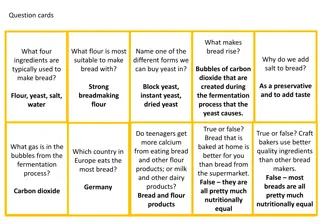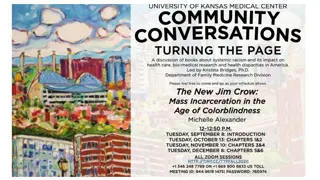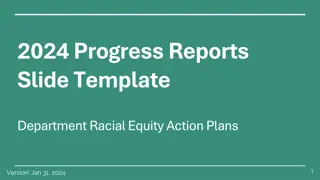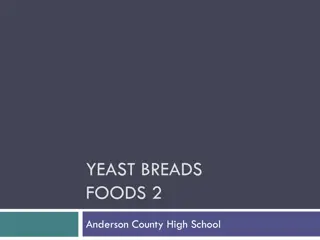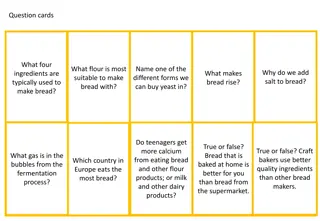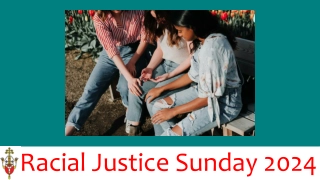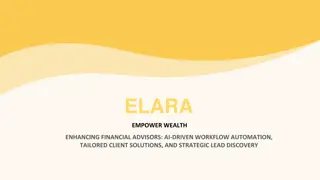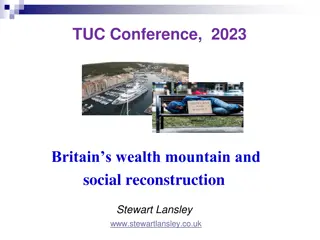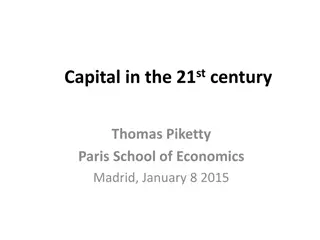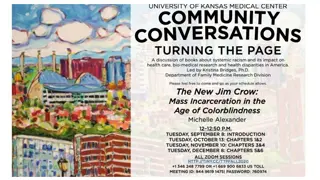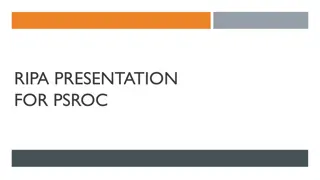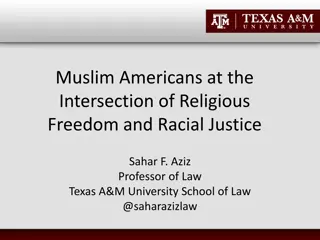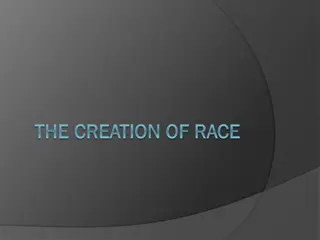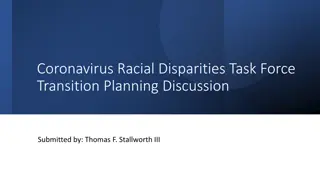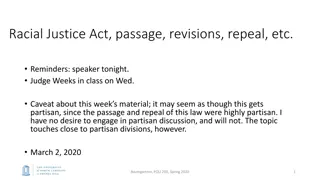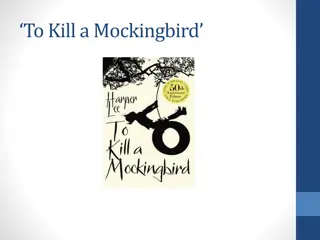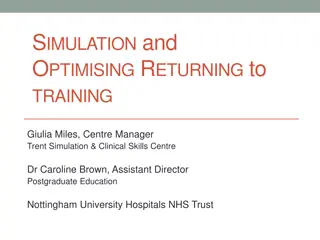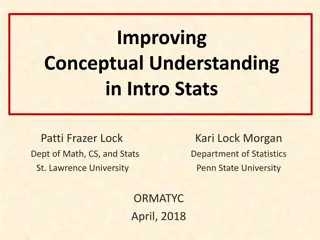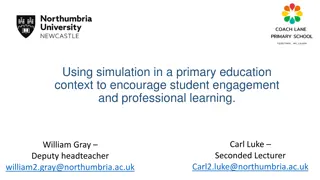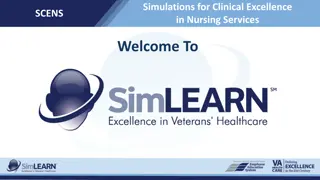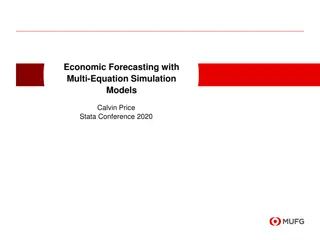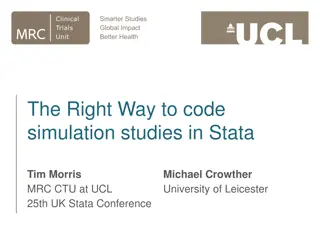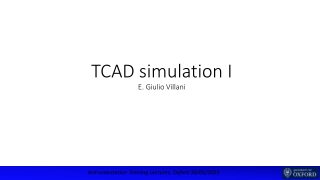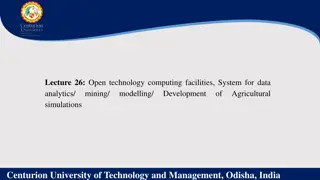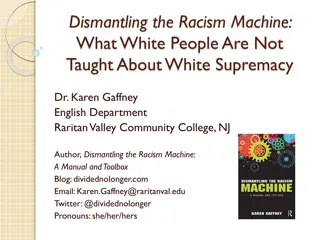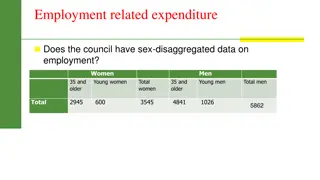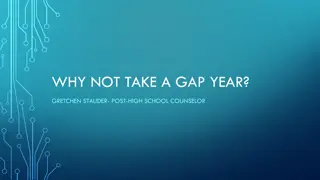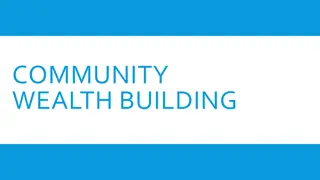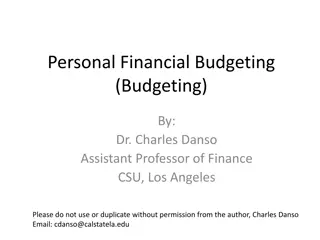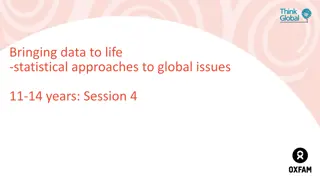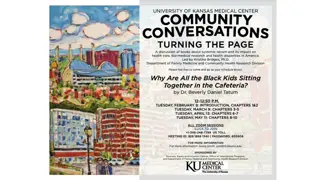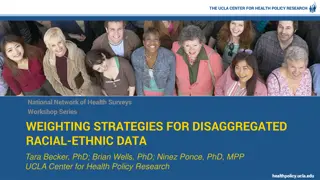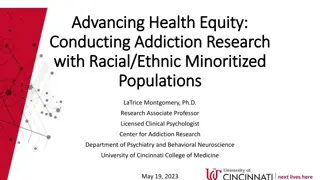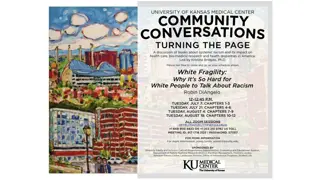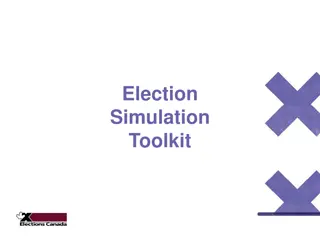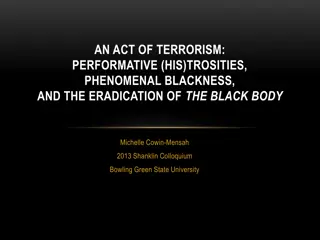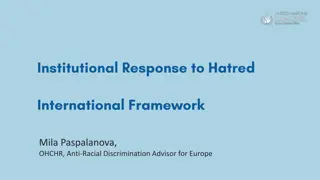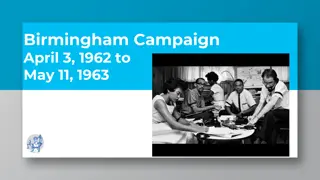Understanding the Racial Wealth Gap: Bread for the World's Learning Simulation
Explore the Racial Wealth Gap through Bread for the World's Learning Simulation, addressing hunger, poverty, and racial inequality in America. Learn about the root causes, scope, and impact of wealth disparities, emphasizing the importance of policy change. Discover why wealth plays a crucial role in poverty and hunger experiences, especially for marginalized communities.
Download Presentation

Please find below an Image/Link to download the presentation.
The content on the website is provided AS IS for your information and personal use only. It may not be sold, licensed, or shared on other websites without obtaining consent from the author. Download presentation by click this link. If you encounter any issues during the download, it is possible that the publisher has removed the file from their server.
E N D
Presentation Transcript
The Racial Wealth Gap The Racial Wealth Gap LEARNING SIMULATION
Todays roadmap Today s roadmap Who is Bread for the World? Opening Activity Scope of Hunger and Poverty in America Racial Wealth Gap Learning Simulation Large Group Discussion
Who is Bread for the World? Who is Bread for the World? Bread for the World is a collective Christian voice urging elected officials on the Hill and in the administration to end hunger and poverty at home and abroad. by changing policies, programs, and conditions that allow hunger and poverty to persist. We believe it is important to address the root causes of hunger and poverty, racial inequality being one of them.
Opening Activity Opening Activity What brings everyone here today? How does your church, organization, or community engage in anti-hunger or anti- poverty efforts? Are you familiar with the racial wealth or income gap?
Whats the Scope? What s the Scope? Today, more than 41 million Americans face hunger. Over 40.6 million people live below the poverty line.
Whats the Scope? What s the Scope? Today, more than 41 million Americans face hunger. Over 40.6 million people live below the poverty line. 50% ofAmericans could become poor of American households would face poverty if someone lost a job or got sick.
Whats the Scope? What s the Scope? People of color are more likely to face all three: They are TWICE as likely to: Experience hunger Live below the poverty line Be one paycheck away from becoming poor
Whats the Scope? What s the Scope? BUT WHY??
Why This Simulation? Why This Simulation? Without wealth, you are more likely to become poor Wealth When you are poor, you are more likely to experience hunger Income and Poverty Hunger
Simulation Goals Simulation Goals Gain a better understanding of the racial wealth, income, and hunger gap, so that we can .. Understand why racial equity is important to address structural inequality Discuss racial equity within our organizations, congregations, and/or communities Incorporate a racial equity lens into our daily work, life, worship, policies, practices, advocacy, etc. Feel more comfortable explaining the importance of applying a racial equity lens when working to end hunger or poverty or achieve goals in other issue areas.
The Racial Wealth Gap Learning Simulation The Racial Wealth Gap Learning Simulation INSTRUCTIONS Each team should have 4 - 8 participants. Each team receives an envelope and each person blindly selects a card from it. Half of the participants will receive white participant cards and the other half will receive black participant cards. In cases where this is possible, please trade cards so that each player has a participant card different from his or her own racial identity. There are three action cards ( money, land, and opportunity lost ) and 13 policy cards. Starting with a white participant, you will take turns picking up a policy card, reading the card to the group, and then reading the action(s) on the card for players to carry out. The person reading should pause so that everyone can carry out their action(s). Everyone will gain or lose one, two, or all three cards in each round. At the end, count how many money, land, & opportunity lost cards each person has.
The Racial Wealth Gap The Racial Wealth Gap How many money cards did everyone end up with?
The Racial Wealth Gap The Racial Wealth Gap Median Net Worth (In 2013 Dollars) $141,000 $150,000 $100,000 13:1 Ratio $50,000 $11,000 $0 White Household Black Household Source: http://www.pewresearch.org/fact-tank/2014/12/12/racial-wealth-gaps-great-recession/
Racial Wealth Gap! Racial Wealth Gap! Median Net Worth Among Households Living Near the Poverty Line $20,000 $18,000 $18,000 $16,000 $14,000 $12,000 $10,000 18,000:0 Ratio $8,000 $6,000 $4,000 $0 $2,000 $0 White Household Black Household Source: https://socialequity.duke.edu/sites/socialequity.duke.edu/files/site-images/FINAL%20 COMPLETE%20REPORT_.pdf4 U.S. Federal Poverty Guidelines Used
Racial Wealth Gap Learning Simulation Racial Wealth Gap Learning Simulation 1. What did you learn that you didn t know before? 2. What trends did you see in this simulation? 3. How do you see the racial wealth and income divides play out in your own communities? 4. How does this impact your work to end hunger/poverty or engage in other work in your community? 5. What did you learn about the importance of racial equity? 6. How can you incorporate a racial equity lens into your daily work, life, worship, policies, practices, advocacy, etc.?
Racial Wealth Gap Learning Simulation Racial Wealth Gap Learning Simulation Want to access the simulation? Go to bread.org/simulation Let s stay in contact! Feel free to email at [your email]




